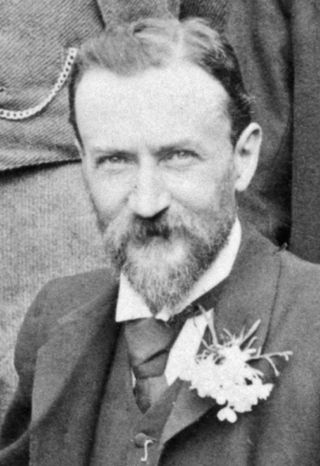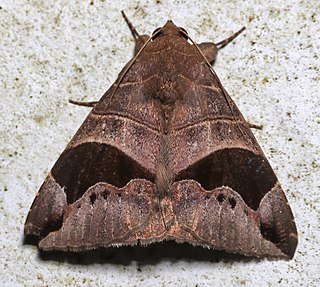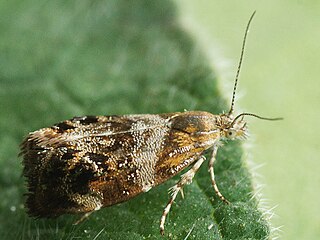External links
- Kemal, Muhabbet & Koçak, Ahmet Ömer (2007). Synonymous Checklist of the South African Lepidoptera (PDF). Cesa Publications on African Lepidoptera. Vol. 2. Archived from the original (PDF) on 2012-02-19 – via Internet Archive.
| Micragrotis microstigma | |
|---|---|
| Scientific classification | |
| Kingdom: | |
| Phylum: | |
| Class: | |
| Order: | |
| Family: | |
| Genus: | |
| Species: | M. microstigma |
| Binomial name | |
| Micragrotis microstigma Hampson, 1903 | |
Micragrotis microstigma is a species of moth of the family Noctuidae first described by George Hampson in 1903. It is found in Africa, including South Africa.

Moths are a group of insects that includes all members of the order Lepidoptera that are not butterflies. They were previously classified as suborder Heterocera, but the group is paraphyletic with respect to butterflies and neither subordinate taxon is used in modern classifications. Moths make up the vast majority of the order. There are approximately 160,000 species of moth, many of which have yet to be described. Most species of moth are nocturnal, although there are also crepuscular and diurnal species.

The Tortricidae are a family of moths, commonly known as tortrix moths or leafroller moths, in the order Lepidoptera. This large family has over 11,000 species described, and is the sole member of the superfamily Tortricoidea, although the genus Heliocosma is sometimes placed within this superfamily. Many of these are economically important pests. Olethreutidae is a junior synonym. The typical resting posture is with the wings folded back, producing a rather rounded profile.

The Hepialidae are a family of insects in the lepidopteran order. Moths of this family are often referred to as swift moths or ghost moths.

Arthur Gardiner Butler F.L.S., F.Z.S. was an English entomologist, arachnologist and ornithologist. He worked at the British Museum on the taxonomy of birds, insects, and spiders.

Per Olof Christopher Aurivillius was a Swedish entomologist.

The Adelidae or fairy longhorn moths are a family of monotrysian moths in the lepidopteran infraorder Heteroneura. The family was first described by Charles Théophile Bruand d'Uzelle in 1851. Most species have at least partially metallic, patterned coloration and are diurnal, sometimes swarming around the tips of branches with an undulating flight. Others are crepuscular and have a drab coloration. Fairy longhorn moths have a wingspan of 4–28 millimeters, and males often have especially long antennae, 1–3 times as long as the forewing.

South Africa, officially the Republic of South Africa (RSA), is the southernmost country in Africa. Its nine provinces are bounded to the south by 2,798 kilometres of coastline that stretches along the South Atlantic and Indian Ocean; to the north by the neighbouring countries of Namibia, Botswana, and Zimbabwe; to the east and northeast by Mozambique and Eswatini; and it encloses Lesotho. Covering an area of 1,221,037 square kilometres, the country has over 62 million people. Pretoria is the administrative capital, while Cape Town, as the seat of Parliament, is the legislative capital. Bloemfontein has traditionally been regarded as the judicial capital. The largest and most populous city is Johannesburg, followed by Cape Town and the busiest port city in sub-Saharan Africa, Durban.

Tytroca metaxantha is a moth of the family Erebidae first described by George Hampson in 1902. It is found in South Africa and Zimbabwe.

Bastilla joviana is a moth of the family Noctuidae first described by Caspar Stoll in 1782. It is found from the Oriental region to the Moluccas and in New Guinea and Australia. It is also present in South Africa.
Micragrotis interstriata is a species of moth of the family Noctuidae first described by George Hampson in 1902. It is found in Africa, including Zimbabwe and South Africa.
Heliothis galatheae is a species of moth of the family Noctuidae first described by Hans Daniel Johan Wallengren in 1856. It is found all over Africa, including South Africa to Ethiopia and the Gambia.
Heliothis leucosticta is a species of moth of the family Noctuidae first described by George Hampson in 1902. It is found in Africa, including Botswana and South Africa.
Heliothis sublimis is a species of moth of the family Noctuidae first described by Emilio Berio in 1962. It is found in Africa, including South Africa.
Heliothis transvaalica is a species of moth of the family Noctuidae first described by William Lucas Distant in 1902. It is found in Transvaal of South Africa and in Namibia.
Heliocheilus multiradiata is a species of moth of the family Noctuidae first described by George Hampson in 1902. It is found in Africa, including South Africa and Zimbabwe.
Varius ochnicola is the only species in the monotypic moth genus Varius of the family Nepticulidae. The genus was erected by Scoble in 1983. The species was first described by Vari in 1955. It is found in South Africa.

Appias epaphia, the diverse white or African albatross, is a butterfly of the family Pieridae. It is found in Africa, south of the Sahara. The habitat consists of forests and heavy woodland.
Titanoptilus stenodactylus is a moth in the family Pterophoridae first described by Thomas Bainbrigge Fletcher in 1911. It is known from South Africa, Tanzania, the Democratic Republic of the Congo and the Comoros.
Louis Beethoven Prout (1864–1943) was an English entomologist and musicologist.

Tebenna bjerkandrella is a moth of the family Choreutidae first described by Carl Peter Thunberg in 1784. It is found from Europe, Morocco, Madeira and the Canary Islands through central Asia to Japan. It has also been recorded from South Africa.